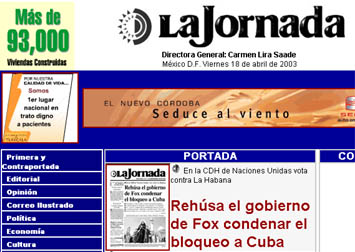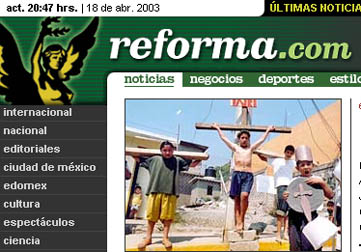

Internet News Readers




According to a previous article of ours, newspaper websites are the most prevalent traditional media form on the Internet. When an Internet user is offered the option of paying (most of the time) to read for the printed version of the newspaper versus the free (most of the time) online version of the same newspaper, the issue of cannibalization inevitably comes up --- will the circulation of the printed version decline as a result?
We will now cite some survey data from the TGI Mexico study. This is a survey of 4,116 persons between the ages of 12 to 64 years old conducted in Mexico City, Guadalajara and Monterrey during the second half of 2002. Within this study, 25.9% of the respondents had used the Internet within the past 30 days, either at home, work or elsewhere. Now among all the respondents, 34.3% were readers of one or more printed weekday and/or Sunday newspapers; with the subset of Internet users, 42.7% were readers of one or more printed weekday and/or Sunday newspapers. Since Internet users are known to be better educated and more affluent, this is not surprising.
Within the Internet users, 18.7% said that they either 'frequently' or 'sometimes' read online editions of newspapers. Among these online newspaper readers, 54.6% were readers of one or more printed weekday and/or Sunday newspapers. In summary, we have these statistics for printed weekday and/or Sunday newspaper readership:
If we had broken these numbers down separately by weekday and Sunday, the trends are the same.
For weekday newspapers, we have these readership statistics:
For Sunday newspapers, we have these readership statistics:
In characterizing these numbers, we refrain from making the assertion that cannibalization does not exist. We do not know that for a fact, because it is possible that printed newspaper readership could have been higher among Internet online newspaper readers otherwise. In our personal experience, we read both editions of our city's major newpaper. For the online edition, we would read the editorial and headlines late at night before the printed edition appears next morning, and we would conduct online searches for past articles. For the printed edition, we would do 'speed reading' through most of the other sections, which is too slow to do online. Therefore, for us at least, we did not reduce our reading of the printed newspaper; in fact, our bond with the newspaper became stronger.
For the population as a whole, the principal source of news information is television. Among all persons 12 to 64 years old in the TGI Mexico study, 90.2% said that they watch television news regularly, which is much higher than the incidence of reading the news in newspapers. For television news viewership, we find:
If we break down these numbers by television news categories, the trends are the same:
For local television news, we have these viewing statistics:
For national television news, we have these viewing statistics:
For international television news, we have these viewing statistics:
The Internet online newspaper readers are much more interested in pursuing news, regardless of whether the sources are newspapers, television or the Internet. But the question of cannibalization of traditional news sources by the Internet cannot be definitively answered here.
(posted by Roland Soong, 5/1/2003)
(Return to Zona Latina's Home Page)